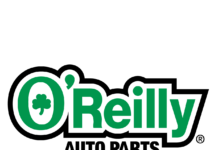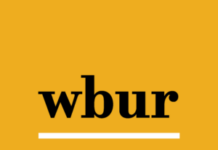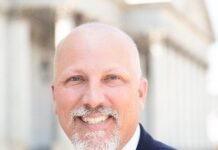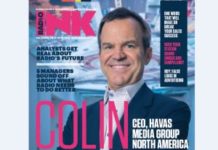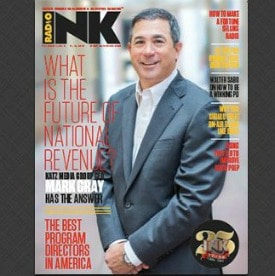
(By Editor in Chief Ed Ryan)
Mark Gray has steadily climbed the ladder of success at the Katz Media Group. He started at the company in 1988 when, fresh out of college, he met a Katz AE on a plane. The two became friends, and Gray met a few more Katz employees. He was so enamored with the passion for what the Katz folks did and the culture of the company, he decided he needed to work there. At the time, Stu Olds was president of Katz. Gray started as an AE, and Olds would go on to mentor Gray for 15 years.
Over the years Gray would advance through the company, taking on vari-ous management roles, including president of the Katz Radio division, before being promoted to president of Katz Radio Group in 2006. In March of 2017, with the departure of Mark Rosenthal, Gray was promoted to CEO of Katz Media Group, overseeing Katz’s radio and television divisions.
Workhouse Connect President/CEO Mike Agovino worked with Gray at Katz from 1988 to 2000, promoting him several times during that time frame, as Agovino advanced himself, from GSM to president. “Mark is an exceptional leader who inspires great loyalty from his people,” Agovino says. “Mark’s always been willing to take on the dirty work and do whatever it takes to fix a problem or address conflict. He’s earned the respect of the entire industry and earned this opportunity to lead Katz.”
Beasley Media Group VP/Sales Bob McCurdy, also once a Katz president, says, “The true measure of a leader is the loyalty they earn from their people and in this arena Mark is without peer. He is smart, disciplined, principled, and a lifelong learner. Katz simply could not have a better individual running the company than Mark Gray.”
iHeartMedia Chairman and CEO Bob Pittman tells Radio Ink, “Throughout his time with Katz, Mark has consistently demonstrated strong leadership, creativity, and drive, and is committed to the success of his station group partners through innovation and flawless execution. Mark is also a great guy to work with and a powerful and effective advocate for both radio and TV.”
Mark Gray is one of the most well-liked executives in the industry today. He has an incredible sense of humor, on display whenever he participates in any radio conference. And he has a much-needed thick skin as he takes the verbal body blows from radio group heads when they complain about the amount of national revenue coming their way. Radio Ink has named Gray one of its “40 Most Powerful People in Radio” for six consecutive years. He’s a member of the board of directors of the Broadcasters Foundation of America and a member of the RAB’s Executive Committee, and he sits on the board of trustees for the Alliance for Women in Media.
Radio Ink: You’ve had a steady climb to the top of the company since 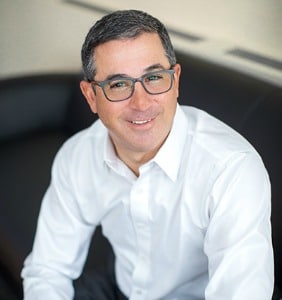 1988. How did that happen? Gray: I think it has a lot to do with how I started. We had a very disciplined training program that taught hard work, putting in as much effort as you could every day, learning as much as you could. I took it very seriously. One of the things I love about Katz is that if you put your head down, paid your dues, worked really hard, there were opportunities to grow — and that still exists today — and that was obviously very beneficial to me.
1988. How did that happen? Gray: I think it has a lot to do with how I started. We had a very disciplined training program that taught hard work, putting in as much effort as you could every day, learning as much as you could. I took it very seriously. One of the things I love about Katz is that if you put your head down, paid your dues, worked really hard, there were opportunities to grow — and that still exists today — and that was obviously very beneficial to me.
Radio Ink: When you first started out at Katz, did you ever think you would become CEO?
Gray: Probably not in 1988. I would like to think that maybe 10 years in, after some growth and movement around the company, that I was so fortunate to be aligned with some great people in the company and mentors and role models, that I did see an opportunity down the road, and I worked at it very hard for many years.
Radio Ink: Talk about some of the people that helped you along the way and what they did for you.
Gray: When I started at Katz I was in a training program meeting with Bob McCurdy every morning at 7 a.m., sometimes six days a week. He taught me about discipline, hard work, and conviction, and being prepared and knowing your stuff better than anybody else. I then spent many years working for Mike Agovino, who taught me about having passion for what we do and building compelling sales stories, and ultimately the importance of building great relationships with both radio stations and agency partners. My career really advanced under his leadership.
I was also fortunate to work directly for Stu Olds. I looked up to him more than anyone as a role model. He had so much integrity. He always did the right thing and treated people with respect, and no matter how difficult the situation, he found a solution to the problem. Stu had a great ability to make people laugh, an incredible sense of humor, and I miss him to this day.
Radio Ink: Why do you think you’ve been successful?
Gray: I’ve been fortunate to have been, and continue to be, surrounded by so many good people and an extremely talented team that works well together. And some of the mentors I’ve had, like Stu, who was a role model to me for 15 years. That’s a big part of the success I’ve had.
At the end of the day, I love what I do. I love the people I work with. I believe in the capabilities of the business, and I have a great time doing it. It’s about surrounding yourself with great people, having a passion for what you do, and working hard. I think I do those things well.
Radio Ink: What is your day like as the CEO of Katz?
Gray: When I am not traveling, I like to start early. I have about an hour commute from Manhattan. I like to be on the road before 6 a.m. I’m from the Midwest, so I’m a driver, and it gives a couple of hours every day in the car to listen to radio. When I’m in the office, one thing I’m conscientious about is making personal connections, so I’m trying to rely less on e-mail and do as many in-person meetings as I can — certainly, phone calls versus e-mail as much as possible.
I’m a list guy and try to concentrate on three really big things. I write down three of the biggest priorities I want to accomplish. No matter how crazy the day gets, at the end of the day, I feel like I’ve accomplished some really important things. I spend a decent amount of time on the phone and in person with our broadcasters and stations. I do the same thing with agencies and advertisers. I try to get out and do as many calls as possible. The rest of the time in the office is spent internally with the management team, and with sellers strategizing ways to bring more money to radio.
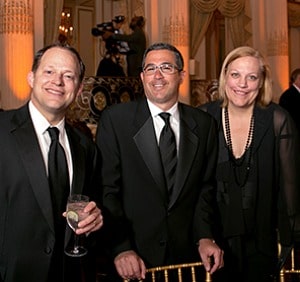 Radio Ink: What is your philosophy on managing people?
Radio Ink: What is your philosophy on managing people?
Gray: I like to surround myself with people who really believe in what they do and have a passion for it. I like to hire talented people and give them all the tools and support they need and let them do their jobs.
Radio Ink: Describe the process Katz goes through to bring national revenue to radio. Gray: There are really three areas. The transactional business, which is business coming out of media departments all over the country, where we are all in there responding to RFPs, representing our radio stations individually, positioning, selling, and fighting for orders.
The second area, and this is the more important one, is bringing dollars into the sector. Everyone at Katz right now is focused on developing new business for radio and trying to bring more dollars into the sector. We have invested a significant amount of money and resources in bringing in talent and supporting our business development efforts. We have project managers who are focused from beginning to end on new campaigns for radio.
We have creative directors working with advertisers on great ideas and campaigns we can get on air. We just recently did our first creative workshop, where we had some of our largest broadcasters in the country brainstorming ideas with us that we can bring to advertisers, that we can execute across all broadcast groups across the country.
The third area is advocacy. We have a dedicated research team putting out strong data supporting radio’s effectiveness, and we’re sharing that with radio stations across the country as well as advertisers and agencies.
Radio Ink: Do you get to visit advertisers often?
Gray: I do, and more than we have ever done before. I think traditionally, if you look at the rep business, you would know we spend a great deal of time at agencies and specifically at media departments. Our company has done an excellent job over the last five-10 years at expanding that, obviously at very high levels of agencies and direct relationships with some of the biggest advertisers.
Radio Ink: Do you get the feeling advertisers and agencies understand that radio works for them?
Gray: I do. Advertisers love radio’s reach and the immediacy and the ability to change topics quickly. There are additional things they’re looking for, like more data and insights into our audiences. We’re working on some programmatic solutions to help do that.
Radio Ink: What are the biggest challenges you hear from the national clients?
Gray: The attribution issue, which is for all traditional media, not just radio. We all know what a great reach we have and how effective radio can be and how important it is to the media mix, but we have to continue to find ways to prove and showcase that we truly do deliver.
Radio Ink: How can we do that better?
Gray: We are spending time with big research companies, and the RAB is involved as well, so there are some projects we have spec’ed out right now to take a piece of business that is using several different mediums, from beginning to end, and quantify what radio delivers in that media mix, and that’s really important.
Radio Ink: Over the past several years, we’ve seen several ROI studies that show the strengths of radio. Do advertisers believe them?
Gray: I think they do. There was the 6:1 study that we started with in the packaged-goods area. There is a tremendous number of ROI studies for radio, all of them very positive. The thing that comes out is radio delivers. I don’t think they are caught up in that ratio, but the data we have that supports the ROI, and that supports it across more than a few categories, is important to telling our story.
Radio Ink: How is the growth for national looking in 2017?
Gray: It’s not as strong as we anticipated at the beginning of the year. Frankly, I think that has a little bit to do with the economy. I don’t think it’s growing as much as some anticipated, but we have confidence it will pick up in the back half of the year. One of the good signs is that if you look at our 25 top advertisers for the first four months of the year, 15 of those are spending more than they did a year ago, and we see that as a positive sign.
Radio Ink: Which categories are looking strong?
Gray: Retail is a good category for us now. We’re seeing decent growth for the first six months of the year. We have business coming in from Mattress Firm, we’re seeing growth in grocery stores like Whole Foods, which is really good. We have some interesting growth online from Indeed.com and Amazon.
The one category we would like to see pick up is telecom, which has historically been our largest category the past few years. It’s very reactionary among all the players and we’re seeing a little less spin, but we’re working directly with them to move that forward.
Radio Ink: Any read on automotive?
Gray: It’s a little less important for national because of the different buckets of money, in terms of how it’s spent in local, but we’re seeing some consistent business compared to the prior year. We have the big players like GM and Chrysler who have money on the books right now, but it has not been, for corporate dollars, historically a big driver.
Radio Ink: What can radio stations do to help national?
Gray: The clients that help drive national business treat national and local business the same. They run schedules as ordered — with minimal bumps. Our best partners also develop local contacts for national accounts and share local insights with our sales team about the marketplace. Sharing success stories and insights is key in helping us be more creative with finding solutions.
Radio Ink: Do you feel good about the rates radio is getting?
Gray: I would always like higher rates, but I think we’re doing a good job in terms of national and what we do for radio stations.
Radio Ink: For years we’ve heard radio executives saying radio has to tell a better story. What is Katz doing to help radio tell its story?
Gray: There is no silver bullet or one big thing that would change our destiny immediately. It does take time, and there are a lot of people on a national level, local level, at broadcast groups, the RAB, that really understand the strength of the medium and can tell the story. Repetition works. It’s about getting to the right people. It’s about the frequency with which we get to those people. It’s about new ideas and doing everything we can to advocate for the medium.
As an industry, I think we’re making many inroads with some of the biggest advertisers. As everybody’s aware, there are a lot of questions about some of the digital advertising dollars that are being spent and how much they’re producing. I think radio is in a great position to go in and talk to those advertisers about what we know is real, about our huge reach, about the ability to deliver 93 percent of the audience, about delivering millennials better than anybody else, and about the ROI and effectiveness of radio.
The more people who understand that information and go out and make calls using it, the better we will be as an industry.
Radio Ink: Do you think advertisers still believe digital is the shining star? Or are they starting to come around?
Gray: I think there are a lot of questions being asked. Start with the CMO of Procter & Gamble, one of the biggest advertisers in the country. Or if you read some of the things Chase just did recently in terms of reducing the amount of sites they were buying and the effectiveness of their campaign. There are a lot of questions and concern. I think that’s clear.
What’s more important is how radio responds to that. I have personally spent a lot of time the last few weeks with some of the largest groups and group heads discussing what we can do, timing-wise, to get in there and get some of those dollars redirected to radio.
Radio Ink: Do you think we will see more data from Katz, iHeart, Westwood, and other companies?
Gray: I absolutely do. I know you will see it from Katz. I believe from iHeart as well. I think Cumulus has done some really good things. I spend a lot of time with the RAB, and we’re constantly having conversations about different research and more data and more studies we can do to enhance and grow our business.
Radio Ink: How is your programmatic solution for radio coming along? Gray: Expressway from Katz continues to evolve. Buyers can now connect directly to premium inventory from major radio groups. We have eight of the top 10 broadcasters and several critically important regional broadcasters participating on the exchange. We also have some of the largest agencies participating.
Several live campaigns have already been completed or are currently active, and we are getting great feedback from agencies, especially as it relates to transparency and reporting. Things are moving along, and we expect continued growth through the rest of the year.
Radio Ink: Radio One CEO Alfred Liggins recently criticized iHeartMedia, 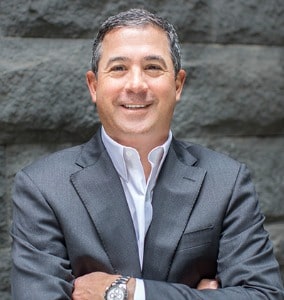 which owns Katz, for his company’s poor performance with national revenue. Is every company that works with Katz being treating fairly?
which owns Katz, for his company’s poor performance with national revenue. Is every company that works with Katz being treating fairly?
Gray: Every broadcast group we represent is treated fairly. We have five different rep firm companies within Katz Radio Group, and they aggressively compete with each other on a daily basis. Radio One is a very important client to Katz, and Alfred is a good friend. For clarity purposes, Katz does not represent iHeart. They have their own in-house rep firm.
Radio Ink: When you get on the platform with other CEOs, you certainly take some arrows.
Gray: It’s about being prepared and knowing what’s going on with their business — specifically, what makes a strong national rep and understanding their markets, stations, book of business, and earning their respect. Part of the job is taking those arrows. It does not bother me at all. I thrive under the pressure and enjoy being challenged, which is why I have done well in this role.
I’m fortunate to have great people around me. What inspires me is bringing in so many people early and watching them grow throughout the company. I enjoy working with broadcasters across the country. I love the view national gives me. It allows me to see what is going on in all markets and sizes, and to me, that’s all about learning and growing.
Nothing motivates me more than my family. I have a terrific wife, Monica, who has tolerated me all these years, I have three great boys, Cooper, Tyler, Hudson — all that is very motivating to me.
Radio Ink: Do you feel that the radio industry has strong leadership?
Gray: I think it does. I think the groups are operating the way they need to in terms of the things I’m focused on, bringing more dollars to radio, bringing great ideas to advertisers. We rely on our radio groups to help us. We work together to get more research and data to agencies and advertisers. The biggest groups understand that well.
Radio Ink: You are the co-chair of Radio Ink’s Forecast 2018 conference. Why do you believe radio executives should attend that conference?
Gray: I think it’s a great day. I’ve been participating in Forecast for over 10 years. It’s a day to get exposure to many leaders in our industry, to truly understand what’s going on in all different aspects of the business, to get some exposure to the largest advertisers, the smartest people. There are so many different things that happen during that conference that it’s important for everyone to be involved.
Radio Ink: What are your goals?
Gray: To do everything I can with the Katz team to bring more dollars to the sector. That’s where my focus is at the highest level: What can we do as a company, and do more of as a company, to generate more revenue and dollars to the radio sector?

